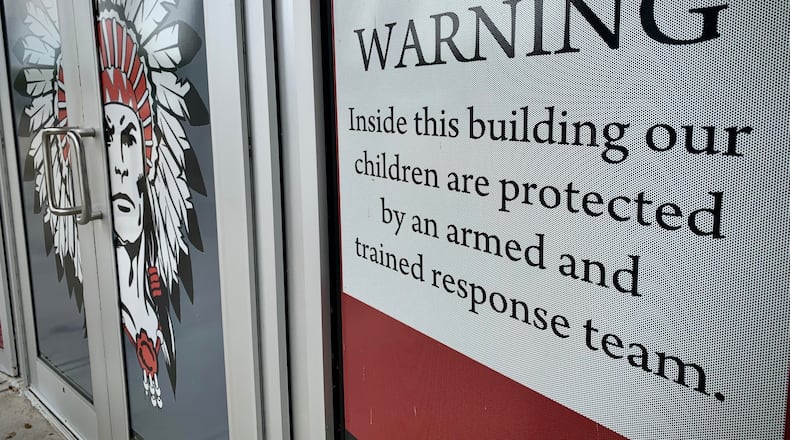The Ohio School Safety Center’s Armed School Staff Essential Training curriculum includes 24 hours of initial training and eight hours of annual recertification training, the maximum number of hours permitted by law, according to Ohio Gov. Mike DeWine’s office. The curriculum defines the subjects that instructors must cover, the amount of time spent on each topic and learning objectives.
Both the initial and recertification training include:
- scenario-based training
- instruction on mitigation techniques
- de-escalation techniques
- tactics of responding to critical incidents
- neutralization of potential threats and active shooters
- tactical live firearm training.
Training with the state begins in 2023, but schools can train alternatively through another provider who meets these standards.
Bellbrook, West Carrollton, Mad River and Sidney are among the local school districts that have chosen to allow some staff to access guns in emergencies during the school day. Most districts have not authorized the program, and the schools that have said they are still using other methods, like school resource officers, mental health resources and alarm systems, to protect students.
The Bellbrook-Sugarcreek Local School District Board of Education created an Active Shooter Response Team Implementation Committee in September. The school is still working to implement the team.
Henry S. Conte, spokesman for Bellbrook-Sugarcreek schools, said the district elected to go with more training than the state requires and is currently looking at the state training. If the implementation committee wants different training, the school district will work with the state to find an alternative, he said.
“There was no specific local threat that made the district look into an active shooter response team,” Conte said. “Of course, the tragedy in Uvalde, Texas, brought this issue back to the forefront. But this is part of our layered approach to safety.”
Chad Wyen, the superintendent for Mad River, said the district has applied for an alternative training provider. In 2016, Mad River approved an armed response team, but the unit was disbanded in 2021 due to a state supreme court decision ruling that only trained police officers would be able to access guns in school grounds.
During that time, Wyen said the members of the district response team were still training. That meant it was possible to reinstate the armed response team when DeWine signed House Bill 99 into law earlier this year.
“The members of our team have continued to train and we are prepared to implement the team pending the approval of our application,” Wyen said. “The process for approval may take up to 30 days.”
Wyen noted the training the district requires for their armed response team is significantly more than what the state requires, with more initial training and time spent quarterly on the range. The district also has a school resource officer, Officer Nick Toscani.
Schools can find more information on how to sign up for state training or training offered by an alternate entity at ohioschoolsafetycenter.ohio.gov.
About the Author

